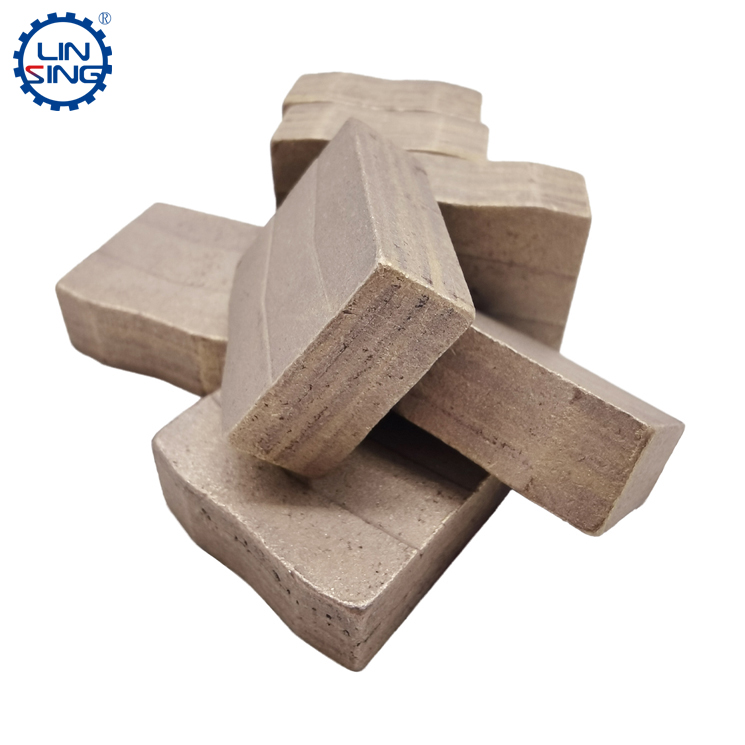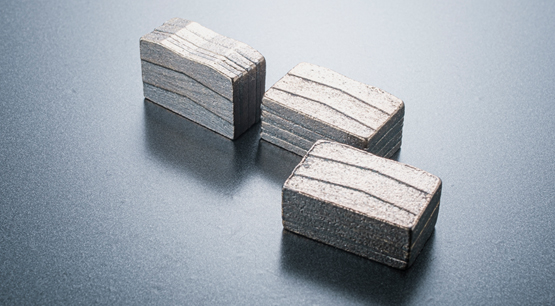The sintering of the diamond segment is a very important step in the production and shaping process of the segment. First, the sheet material that needs to be cold pressed into the sheet is placed in the graphite mold in order, and then the graphite mold is locked, placed in the vacuum sintering machine, and passed through the graphite mold. When both ends are energized, a lot of heat is generated due to the high resistance of graphite. A large amount of heat and constant pressure on the graphite mold complete the sintering process of the diamond segment under this high temperature and high pressure situation.
The sintering process of diamond segment is very complicated, mainly involving physical and chemical reactions. After sintering for a certain period of time, heat preservation and pressure retention, temperature reduction and pressure reduction are started. Finally, after the graphite mold is completely cooled, it will be demolded. During the demolding process, the most common problem is that the segment is difficult to disassemble. There are four main reasons for this problem:
1: Excessive sintering time. During the sintering process of the diamond segment, the sintering time determines many factors. After the sintering time is too high, the diamond segment has a flow of material, and many flows are tightly combined with the graphite mold. After the mold is cooled, the segment cannot be taken out.
2: The sintering temperature is too high. When the sintering temperature of the segment is too high, more chemical reactions occur throughout the segment, especially some metals begin to react with graphite to form a new mucosal layer. In this case, the segment is difficult to peel off in the mold.
3: This kind of situation is the most common, that is, some special materials are added to the raw material of the segment, forming a chemical layer that is difficult to peel off, especially after the sandstone segment is sintered, it is quite common that it is difficult to peel off.
4: The thickness of the iron sheet is too wide. If it is a sandwich segment with the iron sheet as a non-working layer, the actual sintering volume of the powder and the iron sheet will be larger than the graphite mold system preset for the diamond segment if the thickness of the iron sheet is too thick. Wearing small shoes with big feet will also make it difficult to demold the segment.
If the reason is found, there will be corresponding solutions. The current methods for quick response to mold removal are as follows:
1: Use a mold release agent. This material is liquid at room temperature. Brush the mold release agent to the inner wall of the mold with a brush, and then put it into the sintering machine for sintering. Finally, because of the presence of the mold release agent, let the knife The head demolding speed has been accelerated. Of course, if it is the fourth type above, it is difficult to demold due to the increase in its volume, and it can only be handled in the second way.
2: Cooling and dismantling. If it cannot be dismantled when the temperature is high, put it in the freezing chamber. When the temperature of the segment reaches a very low point, the segment can be quickly peeled off, but this method will cause Production costs are rising, so it is currently only at the experimental stage.
3: This method adopts mechanical hook demoulding, which is mainly to use machinery to quickly adsorb the segment, and complete the demoulding of the segment through magnetic force and pulling force.

What should I do if the diamond segment sticks to the graphite model and can’t fall off?
Publish date:2022-07-13 13:37:32 Article From:Linsing Diamond Tools Clicks:










